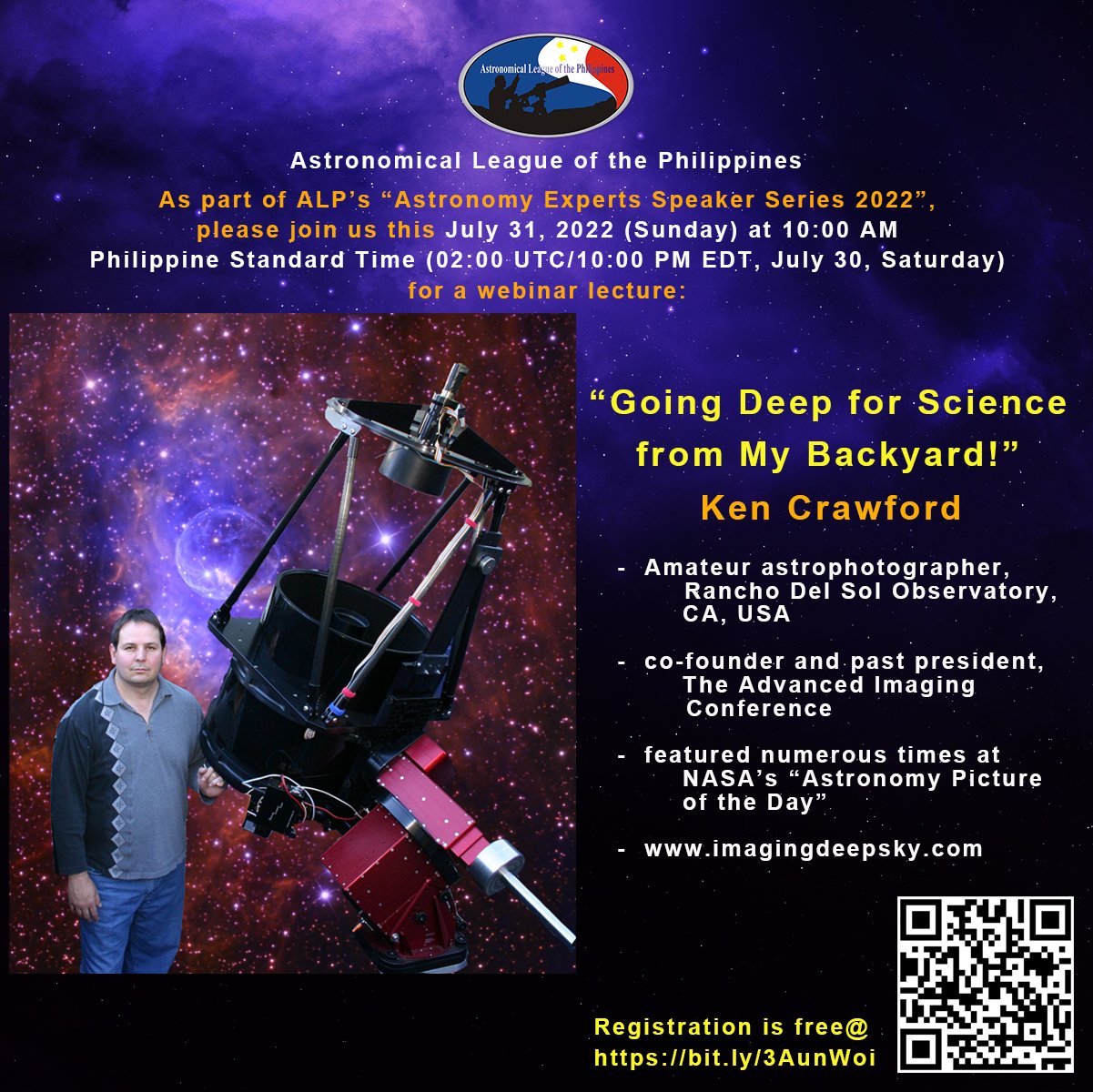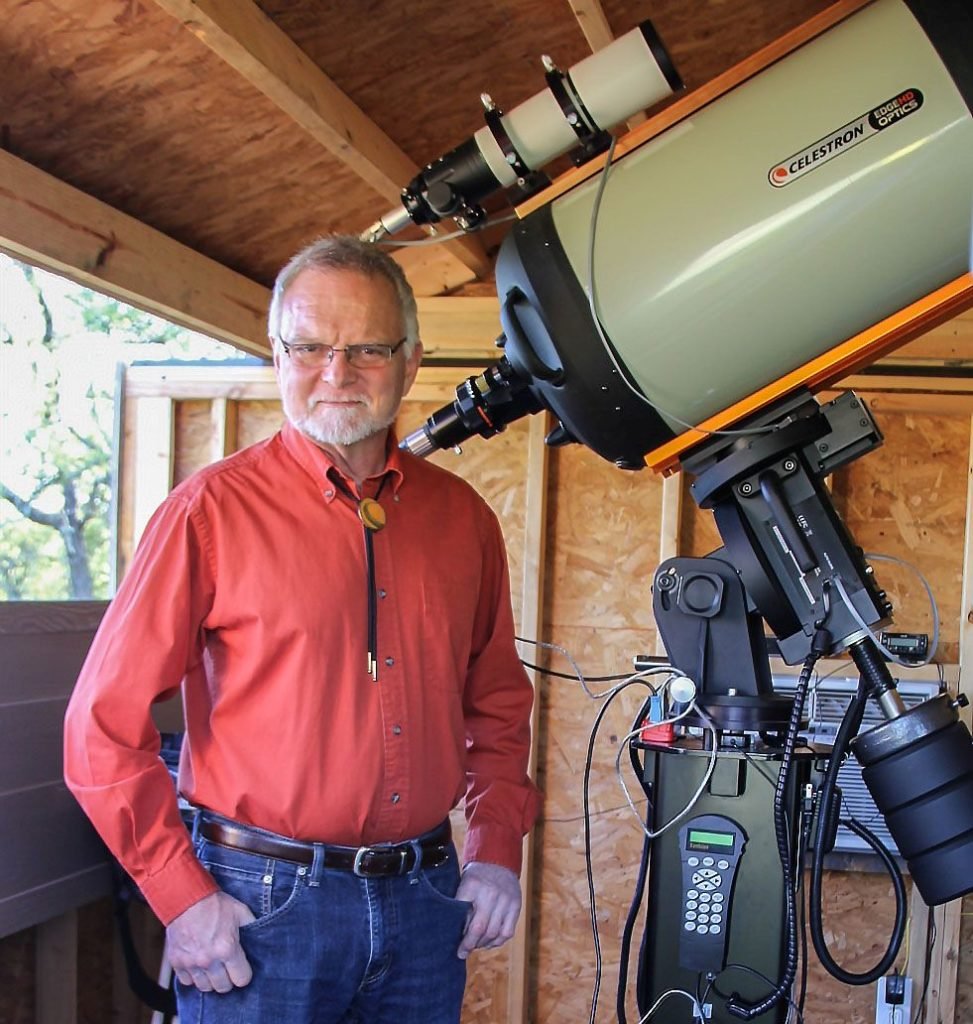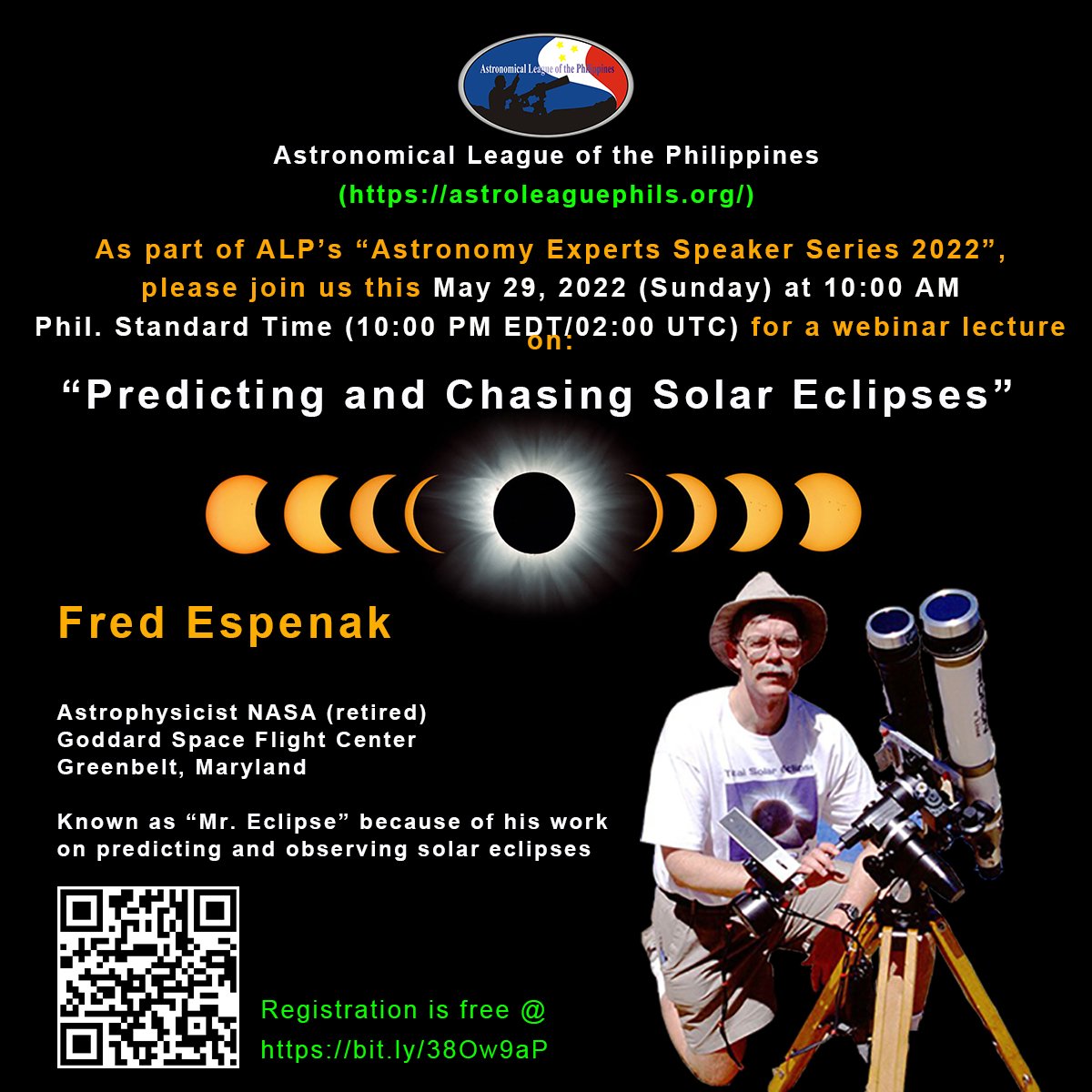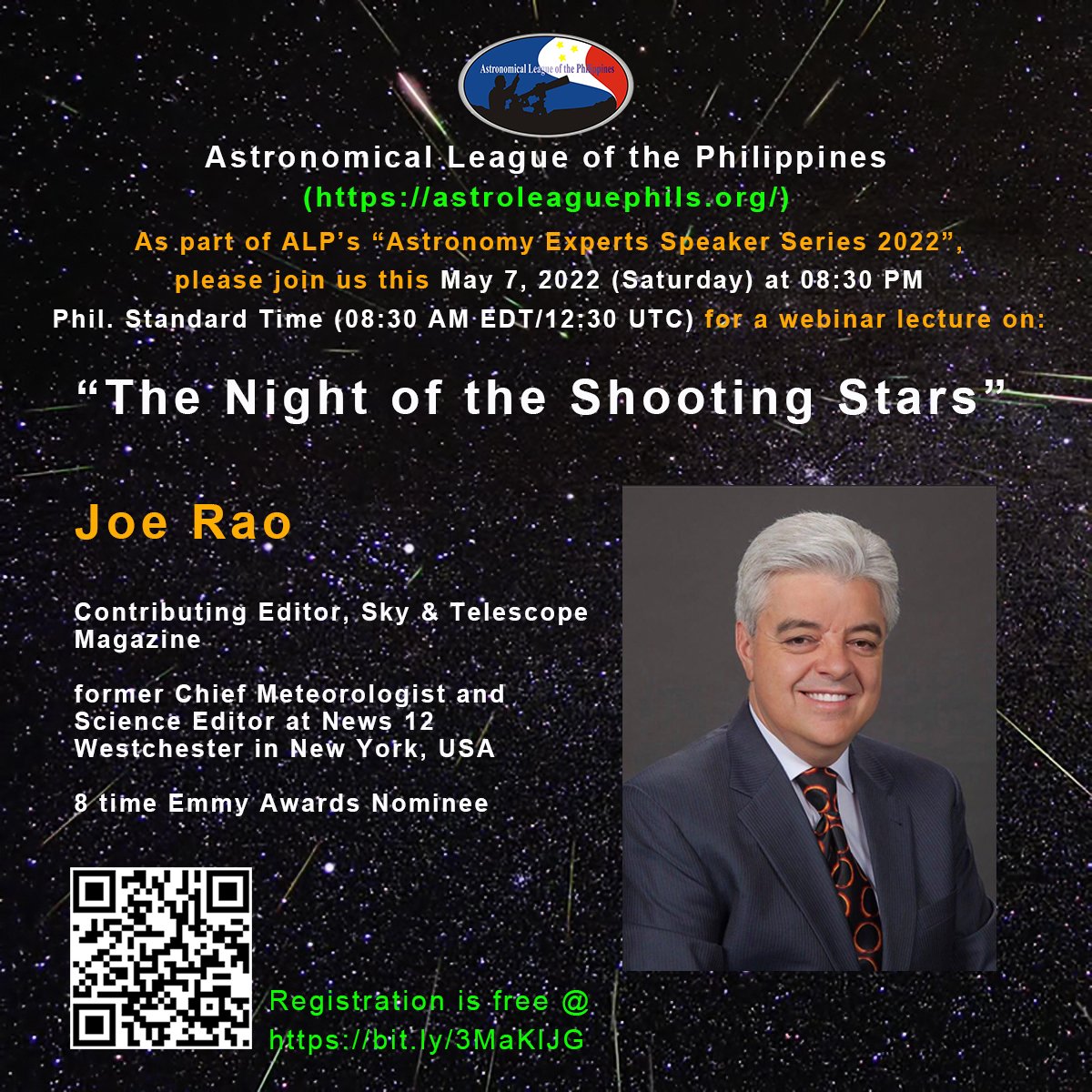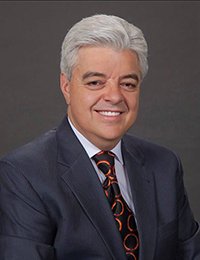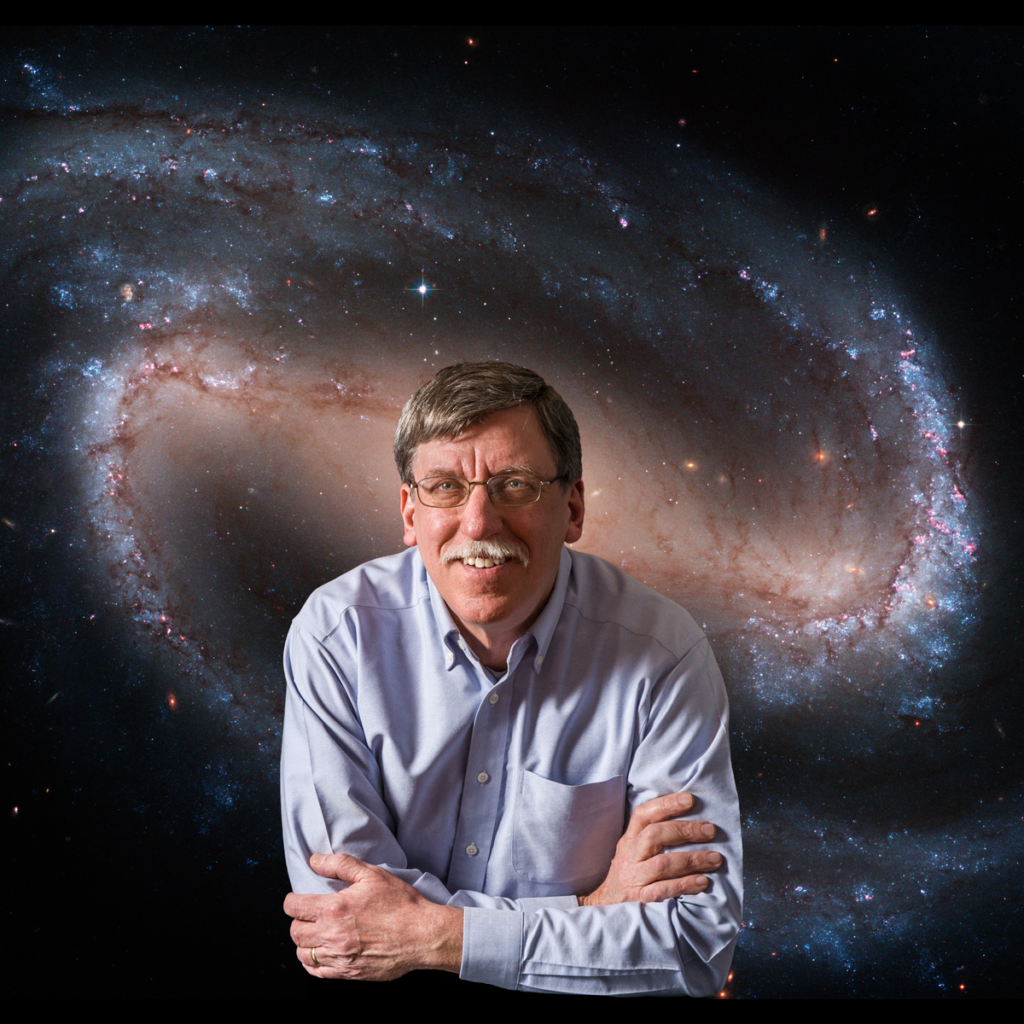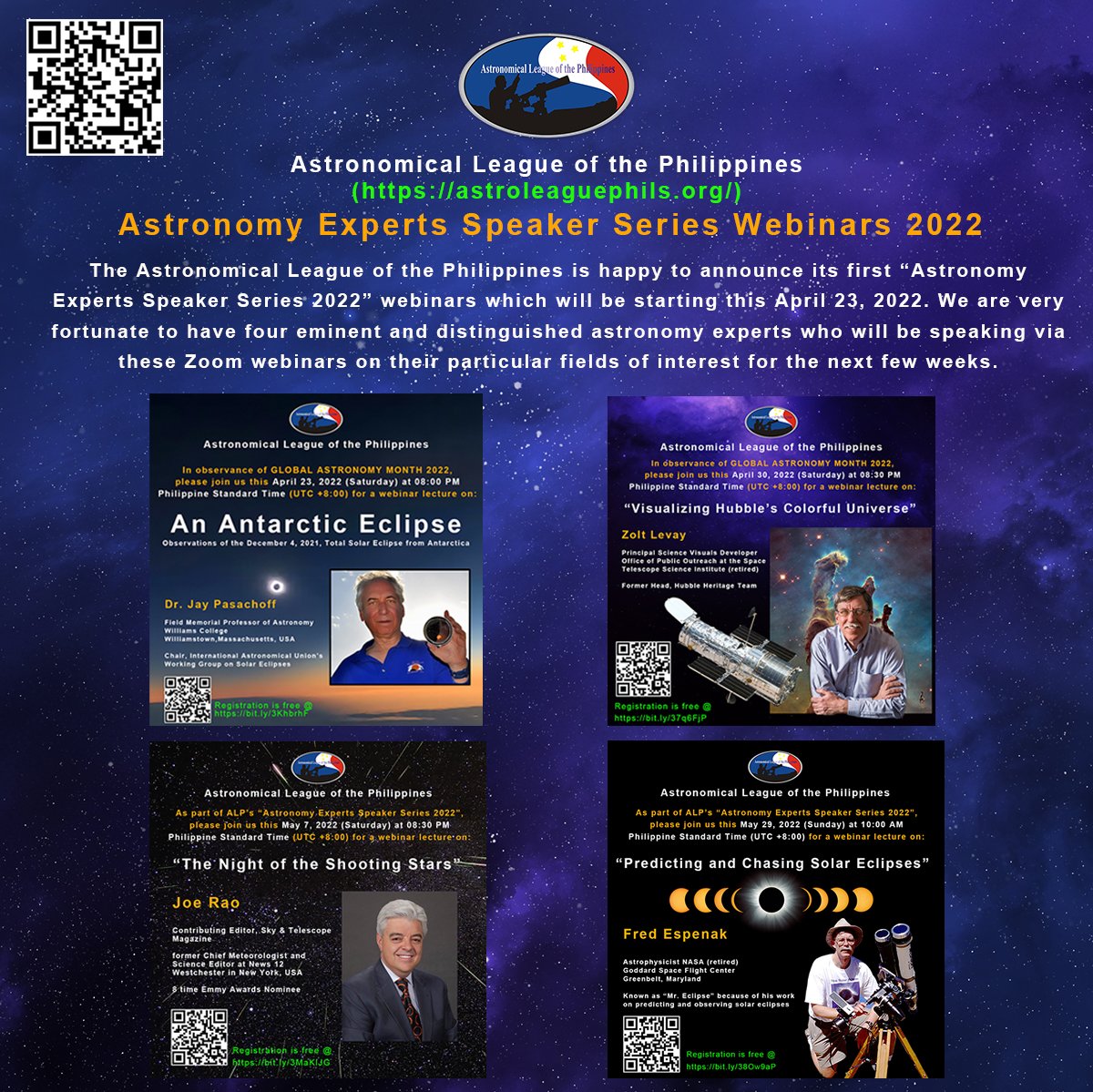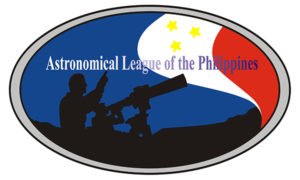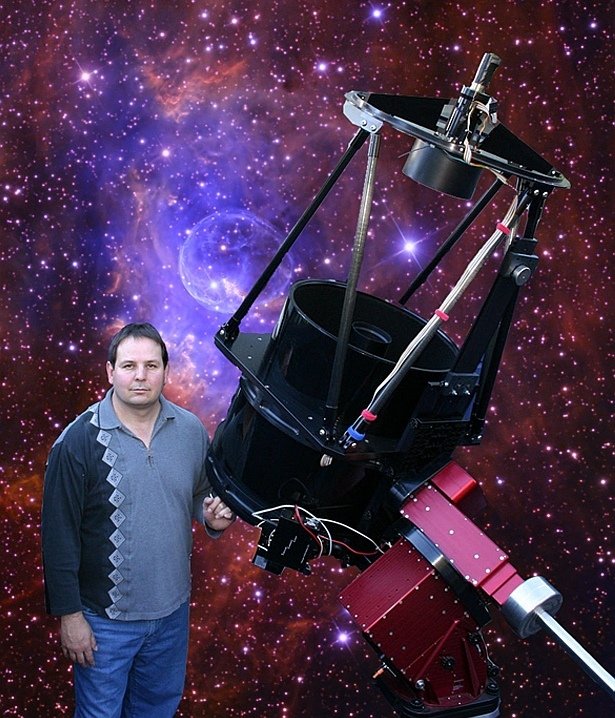
“Going Deep for Science from My Backyard!” by Ken Crawford, July 31, 2022, 10:00 AM Philippine Standard Time
The Astronomical League of the Philippines is inviting you to attend the free webinar lecture entitled “Going Deep for Science from My Backyard!” by the noted astrophotographer, Ken Crawford, on July 31, 2022, Sunday morning at 10:00 AM Philippine Standard Time. (02:00 UTC/10:00 PM EDT, July 30, Saturday)
World-class astrophotographer Ken Crawford has been observing the night sky since 8th grade. In 2002, he built his Rancho Del Sol Observatory at a dark-sky site in Northern California and started taking images of the deep sky. In 2004, Crawford co-founded The Advanced Imaging Conference, Inc. and served as its president from 2007 to 2014.
Crawford’s images have been featured in numerous magazines, books, websites, movies, and public exhibits. To date, his images have been featured 40 times in NASA’s “Astronomy Picture of the Day.”
Abstract: Amateur astrophotographers are not only producing amazing wide-field and high-resolution images of celestial objects, but some are also pushing the limits and going deep for science. As access to professional telescopes is limited, more professional astronomers are using data produced by amateurs with modest imaging systems at dark-sky sites. This is my personal journey in the pursuit of capturing high-resolution deep-sky objects for “pretty pictures,” and ending up contributing to extended red emissions and the detection of star streams. These rivers of stars help add to the hierarchical framework for galaxy formation, minor merging and tidal interactions through Professional-Amateur (Pro-Am) collaborations.

